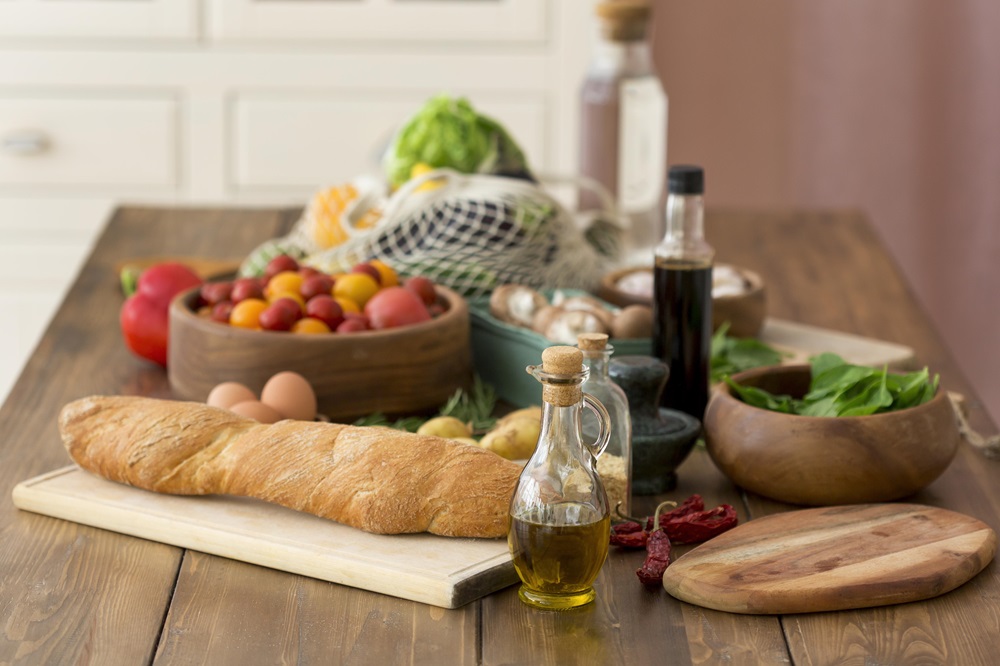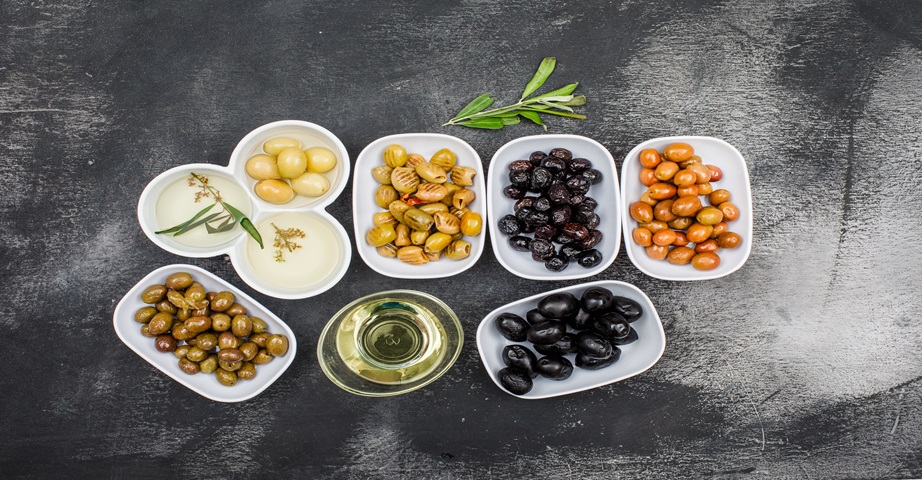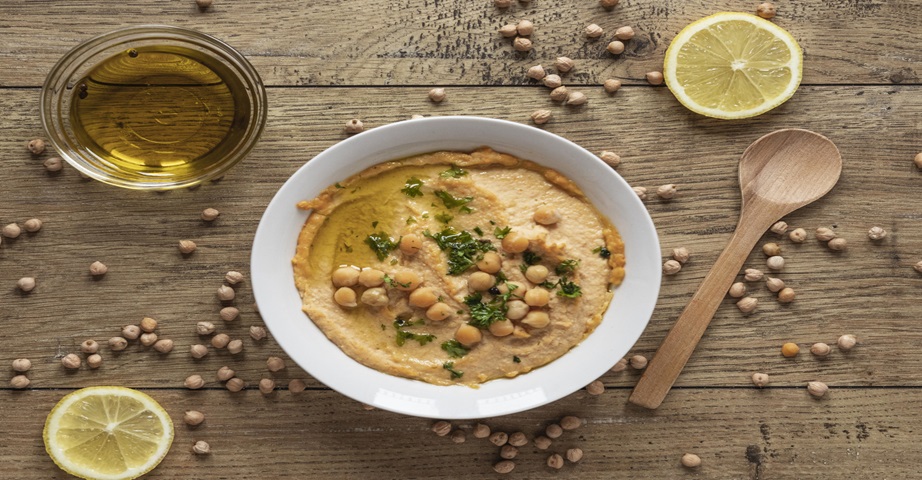Mediterranean diet - products, rules and recipes

Mediterranean diet is considered one of the healthiest diets in the world. It is a well-studied way of eating, originating from Mediterranean countries, which is distinguished by simple rules. It is a menu that provides the human body with a wealth of valuable nutrients. What can you eat on a Mediterranean diet? What are the advantages and disadvantages of the nutrition model? Mediterranean diet recipes - what does the menu of the Mediterranean diet look like?
Summary
Mediterranean diet - what is it?
Mediterranean diet is a model of nutrition that originates from Mediterranean countries such as Italy, Greece, Portugal and Spain. This is one of the healthiest ways of eating, which owes its popularity to the American researcher - Ancel Keys, who drew attention to the existing involvement between the menu of inhabitants of Mediterranean countries and a reduced risk of developing coronary heart disease, compared to the countries of Northern Europe and the United States.
The Mediterranean diet is a well-researched nutrition and lifestyle plan that stands out for its full taste and aroma. It is a simple way to provide the body with significant amounts of valuable nutrients. It is a model of nutrition, which in the ranking developed by nutrition specialists, nutritionists and representatives of medical sciences has been winning the title of the Healthiest Diet in the World for years.
Mediterranean diet - rules
The Mediterranean diet is a way of eating, which is based primarily on products of plant origin. The basis of the menu are a variety of vegetables and fruits that should be consumed during each meal. In addition, an important aspect of the diet is the inclusion in the daily menu of whole grain cereal products, such as coarse groats, wholegrain bread, oatmeal or wholemeal pasta. As the main source of fats, extra virgin olive oil is recommended, which in Mediterranean countries is commonly used as an addition to salads.
The Mediterranean diet also contains significant amounts of fish and seafood, which are the main source of protein and healthy omega-3 fatty acids in the diet. According to the recommendations of the Mediterranean diet, aromatic, fresh herbs and spices are also extremely important - basil, oregano, rosemary, thyme or tarragon, as well as turmeric, cumin and pepper are most often used during meal preparation. The products recommended in the nutrition model are also legumes, nuts, seeds and olives. The daily Mediterranean diet also includes dairy products such as cottage cheese, feta or halloumi, and fermented milk drinks and natural yoghurts.
In the Mediterranean model of nutrition, you can consume two portions of poultry a week and you should limit the consumption of red meat and meat products. The nutrition plan also includes limiting the consumption of sweets and highly processed food to a minimum. What's more, small amounts of dry red wine are allowed, consumed with a meal.
The pyramid of the Mediterranean diet also takes into account regular physical activity of moderate intensity, as well as taking care of the appropriate length and quality of sleep and daily rest. It is also important to cultivate interpersonal relationships and choose local, seasonal food.
Recommended products
Mediterranean diet - what to eat and what to avoid? Recommended and not recommended products - table
| Group of products | Recommended products | Not recommended products |
Milk and dairy products |
Low-fat milk, fermented dairy products, cottage cheese |
Fat milk, sweetened dairy products |
Meat and fish |
Fish, seafood, poultry in limited quantities |
Red meat, offal and meat preparations |
Fats and nuts |
Healthy vegetable fats - olive oil, rapeseed oil, nuts, seeds, |
Butter, lard, hard margarine, palm and coconut oil, fatty sauces |
vegetables and fruits |
All fresh vegetables and fruits |
Fruits sweetened with sugar or syrup, canned fruits, vegetables in batter |
Cereal products |
Wholegrain cereal products - buckwheat, wholemeal pasta, wholegrain bread |
Processed cereal products, white bread |
Legumes |
Chickpeas, lentils, beans, broad beans, peas, soy |
|
Drinks |
Coffee, tea, water, infusions, small amounts of dry red wine |
Sweetened drinks, carbonated drinks, high-percentage alcohols |
Mediterranean diet - advantages and disadvantages
The Mediterranean diet can improve cognitive abilities, have a positive effect on memory and learning ability. Moreover, the nutrition model may contribute to reducing oxidative stress and chronic inflammation, which is due to the wealth of ingredients showing antioxidant properties in the menu. The Mediterranean diet can also reduce the risk of cardiovascular diseases - the diet can have a positive effect on lipid metabolism and platelet aggregation, showing cardioprotective potential.
In addition, the Mediterranean menu can improve endothelial function and help reduce the risk of developing type II diabetes, reduce plasma glucose and systolic blood pressure. The nutrition model can also promote the reduction of body fat and the reduction of body mass index. Preliminary research also suggests that the Mediterranean diet may positively affect bone health, reducing the risk of fractures and increasing bone mineral density.
The Mediterranean diet can also have a positive effect on sleep quality and sleep performance, and it can also reduce the likelihood of insomnia symptoms. Moreover, the menu can minimize the risk of neurodegenerative diseases, affect the growth of beneficial strains of bacteria in the intestinal microflora and contribute to the reduction of overall mortality among people.
Does the Mediterranean diet have any disadvantages? The use of the classic Mediterranean model of nutrition among residents of other regions of the world can be difficult due to the lack of availability of local Mediterranean products or high prices of this type of food, e.g. extra virgin olive oil or seafood. With the proper balance of the menu and taking into account seasonal products available in our country, which can also be a valuable source of valuable nutrients, the use of the Mediterranean diet should not be a major problem.

Mediterranean diet - menu
The Mediterranean diet is not a restrictive way of eating, therefore, the correct composition of the menu and the selection of appropriate recipes should not cause difficulties among people who intend to include one of the healthiest diets in the world in everyday life. What can an exemplary menu of the Mediterranean diet look like? What recipes are worth applying?
Day I
Breakfast - Nutty oatmeal with fruit
Ingredients: 40 g of oatmeal, 200 ml of milk 2% fat, 1 tablespoon of peanut butter 100% nuts, a handful of blueberries, a handful of strawberries.
Preparation: Boil the milk. Add oat flakes and mix. Leave to swell. Add the peanut butter and mix again until the ingredients are blended. Put into a bowl, add the previously washed blueberries and washed and cut into quarters strawberries.
II breakfast - Seasonal salad with wholemeal toast
Ingredients: a handful of iceberg lettuce, a handful of rocket, 1 tomato, 1 cucumber, a handful of green olives, a tablespoon of olive oil, a slice of whole-grain bread.
Preparation: Wash vegetables. Place lettuce and rocket in a bowl, add finely chopped tomato and cucumber. In the dish also put olives, a tablespoon of olive oil and mix all the products. Consume with a slice of whole-grain bread heated in a dry pan or placed in a toaster.
Lunch - Baked cod with buckwheat and steamed vegetables
Ingredients: 150 g of skinless cod fillet, 50 g of buckwheat, 2 tablespoons of olive oil, favourite spices, 100 g of broccoli, 100 g of green beans, lemon juice.
Preparation: Cook the buckwheat groats according to the instructions on the product packaging. Wash the fish, dry, season at your discretion and put on baking paper. Vegetables wash and steamed. Put the finished products on a plate. Sprinkle the fish with lemon juice and pour the whole dish with olive oil.
Dinner - Bruschetta
Ingredients: 100 g of wholegrain baguette, 1 tomato, 4 slices of mozzarella, a tablespoon of olive oil, favourite spices.
Preparation: Cut the baguette into smaller pieces and roast on a dry pan. Blanch the tomato and peel it, cut it finely and mix it with your favourite spices and olive oil. For warm bread, put a slice of mozzarella and prepared tomato paste.
Day II
Breakfast - Shakshuka
Ingredients: 1 egg, garlic clove, 3 tablespoons of cooked chickpeas, 100 g of chopped tomatoes, favourite spices, a tablespoon of rapeseed oil.
Preparation: Heat the oil in a pan. Add the garlic squeezed through the press and finely chopped tomatoes. Season at your discretion. In tomatoes, make a recess and break an egg into them. Cover the pan with a lid and heat it over a small fire until the egg is coagulate. Add chickpeas and put on a plate.
II breakfast - Pineapple, banana and avocado smoothie
Ingredients: 2 slices of fresh pineapple, 1/4 avocado, 1/2 cup of water, 1 banana, a tablespoon of lemon juice.
Preparation: Wash and dry the fruit. Peel the avocado, cut into smaller pieces and put in a blender cup. Add slices of peeled, fresh pineapple and peeled, cut into smaller parts, banana. Pour water and lemon juice. Blend. Pour into a glass and drink immediately after preparation.
Lunch - Zucchini pancakes with feta cheese and olives
Ingredients: 100 g of zucchini, 4 tablespoons of wholemeal flour, 1 egg, favourite spices, slice of feta cheese, a handful of olives, a tablespoon of rapeseed oil, water.
Preparation: Wash the zucchini and grate on a grater together with the peel. Squeeze off excess water. Add egg, favourite spices and flour. Stir until a solid consistency is obtained. If necessary, add some water and mix the ingredients again. Warm the pan with a small amount of oil. Place the cake on the pancakes with a spoon in a hot pan and fry on both sides. Serve with crushed feta and olives.
Dinner - Sandwiches with hummus and vegetables
Ingredients: Two slices of whole-grain bread, 50 g of hummus, half a fresh cucumber, a handful of cherry tomatoes, two lettuce leaves, a teaspoon of olive oil.
Preparation: Spread bread with hummus. Vegetables wash. On the sandwich, put a leaf of lettuce and sliced cucumber and cherry tomatoes. Sprinkle the whole with olive oil.

Day III
Breakfast - Millet pudding with mango salsa
Ingredients: 50 g of millet groats, 1 cup of milk 2% fat, 1/4 cup of water, 1/2 fresh mango.
Preparation: Rinse millet groats under running water. Put in a pot, add water and half a glass of milk and cover. Cook on low heat until the groat is soft. Blend the cooked millet groats with milk until a smooth consistency is obtained. Mango wash, peel and blend into a smooth mousse. Put the pudding from the groats into a glass dish and pour it with mango salsa.
II breakfast - Fruit salad
Ingredients: 1 orange, 1 kiwi, 1 banana, a handful of walnuts, two tablespoons of natural yogurt, a tablespoon of chia seeds.
Preparation: Wash the fruit, peel and cut it finely. Mix in a bowl. Add yogurt, nuts and chia seeds and mix again.
Lunch - Pasta with spinach and salmon
Ingredients: 70 g of wholemeal pasta, 100 g of skinless salmon, 70 g of fresh spinach, 3 dried tomatoes in oil, a tablespoon of sunflower seeds, favourite spices.
Preparation: Cook the pasta according to the directions on the product packaging. Wash the salmon, dry, season as desired and bake in the oven at 180 degrees. Spinach wash and dry, finely chop. Finely cut the dried tomatoes. In the dish, mix spinach, dried tomatoes, sunflower seeds and diced salmon. Place the cooked pasta and salmon on a plate with spinach and mix the ingredients again.
Dinner - Baked beetroot with brown rice and mozzarella
Ingredients: 1 beetroot, 30 g of brown rice, a slice of mozzarella, favourite spices, a tablespoon of olive oil.
Preparation: Bake the beetroot in the oven at 180 degrees until soft. Cook the rice according to the directions on the package. Peel the roasted beetroot and cut the pulp from the inside. Mix the pulp with pre-cooked groat, finely chopped mozzarella, favourite spices and olive oil and put inside the beet. Consume warm or cold.

